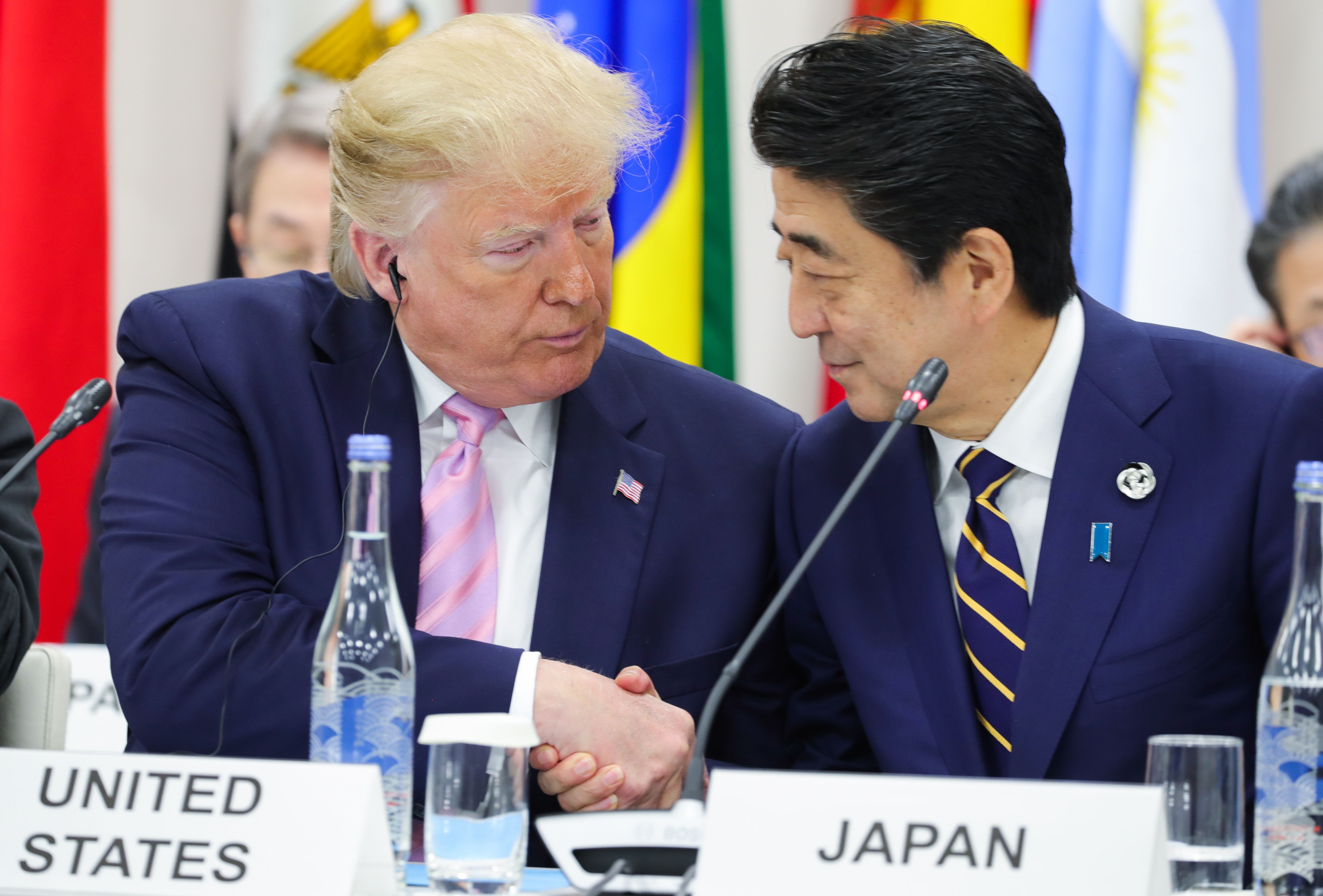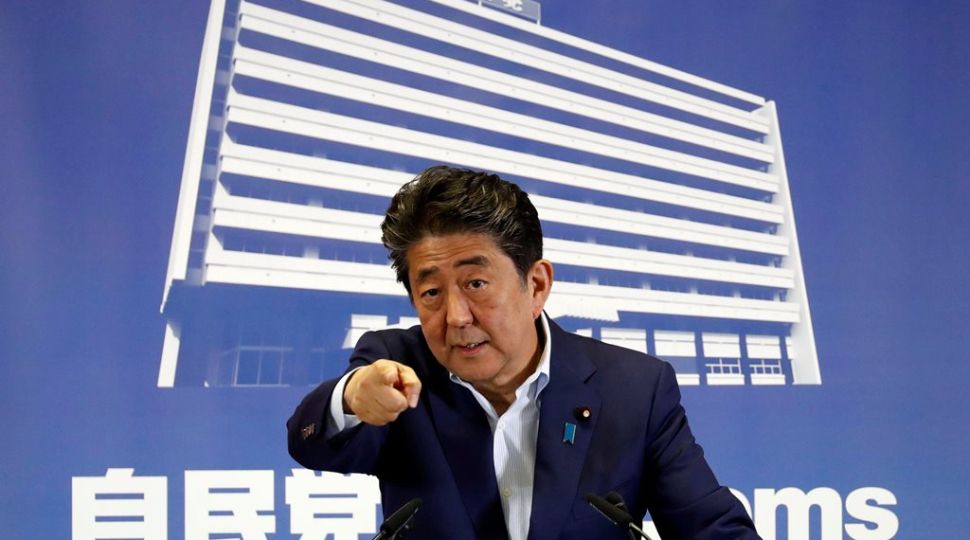The U.S. Trade Deal with Japan: Commerce in the Service of Politics

Japan is the United States’ fourth-largest trading partner, after China, Canada and Mexico (in 2018, U.S. exports amounted to $121 billion, and imports to $179 billion). In his 2016 election campaign, Trump said that Japan’s customs policy and exports to the U.S. damage the financial results of American manufacturers, mainly in the automotive sector. Despite good political relations being declared by both sides, the U.S. imposed duties on Japanese steel and aluminium in May 2018. A year later, Trump identified car imports from Japan (and the EU) as a threat to the U.S. domestic market. At that time, however, the decision to increase tariffs on automotive products was postponed by six months (and is still pending), suggesting that a free trade agreement could guarantee exemption from such charges. The deal was successfully concluded in September 2019. This fits Trump's re-election campaign strategy, which will focus on economic topics.
A Partial Agreement
The deal between the U.S. and Japan is unique compared to other free trade agreements. Instead of a comprehensive liberalisation of trade relations, it is limited to selected sectors. It concerns the reduction of customs duties on agricultural products imported to Japan, and on various types of machinery (such as steam turbines and transformers) exported from Japan to the U.S. (both categories worth about $7 billion). The tariff reduction covers a narrow range of products, listed in the annexes to the agreement, excluding the automotive (including the majority of Japanese export products to the U.S.), chemical and other sectors. The agreement also regulates trade in digital services. The U.S. is committed to promoting free data flow and reducing barriers in this sector. Japan is an important partner in this field, and the agreement is intended to promote U.S. solutions.
The arrangements contained in this trade deal are largely a repetition of the concessions negotiated in the Transpacific Partnership (TPP, concluded with Japan and 10 other Asian and Pacific countries) regarding trade in digital services, agricultural products and machinery. The current agreement also lacks provisions regarding the elimination of non-tariff barriers (licensing requirements and standards), and a mechanism for settling disputes between parties.
As the deal relates to customs rates lower than 5%, the agreement was ratified by executive order, without Trump involving Congress. The adoption of such a solution gives Trump the option to terminate the agreement at will.
Catching up and Easing Tensions
The need to conclude an agreement with Japan, even in such limited form, resulted from Trump's previous decisions, which led to the deterioration of the position of U.S. exporters on the Japanese market. The U.S. withdrawal (in 2017) from the signed TPP deal prevented American companies from gaining better access to the Japanese market. Other countries, including Japan, Canada, Mexico, Australia and New Zealand, implemented an agreement that replaced TPP (under the name CPTPP), thanks to which they obtained preferential conditions in mutual trade. In the meantime, the EU has also concluded and ratified an FTA with Japan.
Thanks to the agreement between the U.S. and Japan, suppliers from the United States can compete on similar terms as entities from other countries. They are, however, at a disadvantage, as Japanese importers may have already concluded contracts with suppliers from the EU or New Zealand, which will delay the entry of U.S. firms to this. The narrow scope of the agreement also means that American companies, unlike those from the EU or CPTPP countries, will not have preferential access to the Japanese market in sectors other than those covered by the agreement. From the U.S. perspective, stepping down from multilateral negotiations (TPP) in favour of bilateral talks with Japan proved to be ineffective, as American entities gained access to this market later, and no new TPP concessions were obtained.
Abe’s government adopted a strategy to ease tensions in relations with the Trump Administration. He did not introduce retaliatory duties for the U.S. tariffs on steel and aluminium and continues to buy U.S. military equipment, such as F-35 fighters and the Aegis Ashore anti-ballistic defence system (since 2010, Japan has spent more than $30 billion, including $18 billion in 2017 to 2018). In this way, Japan hopes to secure its interests and maintain access to the U.S. market. Thus, Abe entered into a trade agreement despite its narrow scope and regardless of the omission of Japan's automotive sector and many industrial goods. Abe received no clear assurance that Trump would not impose duties on cars imported from Japan.
Election Campaign Tool
The United States' limited trade agreements (not only with Japan but also with China) are associated with Trump’s re-election efforts. On one hand, Trump is increasing trade barriers with most U.S. partners and threatening to impose new ones. On the other, he emphasises successes in conducting trade talks. So far, the U.S. has renegotiated the NAFTA agreement (replaced by the United States-Mexico-Canada Agreement, USMCA), concluded an agreement with South Korea, and completed the aforementioned preliminary agreement with China. Finalising the talks is intended to present Trump as an effective negotiator who has fulfilled his promises made in the previous campaign. In particular, agreements with Japan and China concern the agricultural sector. This is because, among other reasons, U.S. agricultural exports to China fell by 4.6% in 2019 compared to 2018 (due to China's retaliation in response to U.S. duties). This threatened the loss of part of the electorate in key swing states (including Michigan, Wisconsin and Pennsylvania). That is why Trump focused on reducing trade tensions and supporting exports of goods from this sector.
The agreement will be used by Trump to strengthen his most important electoral message, according to which economic growth and low unemployment are direct effects of his economic policies. The conclusion of new trade agreements will be presented as beneficial to the United States, although their positive impact on the economy, especially in the first year of their implementation, will be marginal.
Conclusions for the EU
The trade deal between Japan and the U.S. will not lead to a significant rise in competition for EU companies on the Japanese market. This is because the FTA between the EU and Japan was implemented in 2019, and due to the much narrower scope of the deal between the U.S. and Japan (which is also true when comparing the deal with the CPTPP). Trump’s recognition that the deal with Japan is an argument to exempt it from eventual tariffs on automobiles may be disadvantageous to EU companies. The EU does not agree with this position, as potential negotiations over a trade agreement with the U.S. on industrial products have yet to begin due to a mutual lack of understanding regarding terms. In January, however, EU and U.S. representatives suggested possibilities for reaching an understanding this year. It can be expected that Trump will concentrate on the EU once he eases disputes with America’s four main trading partners. This could mean greater pressure, such as threatening new tariffs or implementing those already announced.
Narrow sectoral agreements such as the one between the U.S. and Japan, are not beneficial for the EU. First, they can disrupt trade competition among countries with which the EU does not have individual agreements (as in the case of the first phase of negotiations with China). Second, they undermine the WTO system, which principally limits the possibilities of concluding such narrow agreements. The U.S. is counting on reaching further partial agreements with India in February and plans to open negotiations with Kenya. Executing these plans successfully could undermine the position of EU exporters on those markets.






